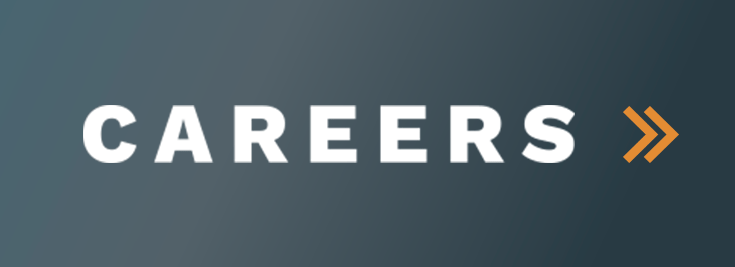Overview
- From our company’s experience and from observing clients, we’ve learned that many work tasks can be done remotely.
- As the end of the pandemic looms in the not-distant future, many companies are still operating remotely and even hiring for permanent, 100% remote positions.
- We predict remote work will stay with us in some capacity for the long term, likely in the form of flexible scheduling, and that technologies enabling remote work will remain popular.
What a year it’s been.
Over the last 14 months of the COVID pandemic, we’ve all seen some pretty big shifts in how we work. The most obvious change many of us have experienced is working from home.
With that came increased use of video calls and other technologies to help us maintain more personal communication easily, if not face-to-face interaction.
The good? The lines between the personal and the professional blurred—it’s commonplace to see kids and pets pop up in the background of a video call—and we got to see more of the human, non-work side of colleagues. We enjoy more flexibility and balance in our lives. We tend to contact people more purposefully, which makes meetings more focused and structured versus just wandering into someone’s office to pick their brain.
The bad? We’re multi-tasking more than ever. It can be challenging to maintain engagement over the long term. Certainly, with our increased reliance on technology, it can be difficult to convey complex information and read others’ reactions.
capSpire was no different than our clients in having to adjust to the new, perhaps not temporary, way of working. So much of our project work is about building trust through face-to-face meetings, during which we can more easily observe clients’ body language and face expressions to better gauge their concerns and questions. Face-to-face interaction also helps with fostering camaraderie. Previously, we used events, lunches and dinners, and happy hours to get to know clients on a personal level.
Our typical project lasts about six months. Completing projects—especially the go-live phase—is typically an “all hands on deck” experience. And when training users on new systems, it’s far preferred to be right there next to each person, guiding them. Managing all this remotely, for a months-long duration, is a huge undertaking.
So, what did we learn during this widespread work-from-home experiment? Every aspect of our major projects, as well as our day-to-day work, can be executed remotely—from onboarding clients, understanding their pain points, learning about their processes, and figuring out how to best tackle problems, to building systems, training users, and launching systems. It’s actually made our work more efficient and speeds up the overall process.
Our clients have also discovered the same about their own operations.
How we successfully navigated remote work
Fortunately, we were better prepared than most companies that have struggled during this time. Not only have we thrived, but we’ve done so without losing the personal, human touch.
We were able to shape our capSpire Support Services around the pandemic. (With this service, we supplement clients’ IT professionals in resolving acute problems that may arise with E/CTRM systems. We also serve as a comprehensive E/CTRM partner in strategizing and planning for the future.) This organizational structure was already in place when COVID struck and had already excelled at providing a higher, more custom level of service than vendors.
Previously, virtual support—supplemented with in-person support—was always part of the equation, though less predominantly. Now that the demand for an E/CTRM partner that is effective while working remotely has surged, we’ve shifted to all-virtual processes.
Additionally, as technology experts, our team was already familiar with the different platforms that enable remote work, including video conferencing and collaboration software (for example, Google suite, Microsoft Teams, and Slack), and had been leveraging them to better serve clients long before the pandemic. We just made sure we had a good cadence of communication with clients, reached out to them proactively, and worked hard to make ourselves extra available and responsive.
The trends we’re seeing right now
Based on our client observations, many companies still ask employees to work remotely. A few have attempted a widespread return to the physical office, but had to retreat from those plans for various reasons.
Interestingly, we’re seeing clients hire for permanent, 100% remote positions, which would’ve been much less common pre-COVID.
Many companies that previously relied on extensive travel to meet with clients, such as ours, are now questioning whether the same level of travel is necessary going forward. There appears to be a significant opportunity to lower project costs while enhancing efficiency. Before the pandemic, travel could comprise 15 to 25% of a project budget, but now those funds can be allocated toward more critical, high-value activities.
What the future may hold
While no one has a crystal ball, we predict that remote work will continue to be part of our working lives in some capacity for the long term. For us, now that clients have seen how successful remote work can be, the whole landscape has changed.
We expect many companies will adopt more flexible scheduling, both because remote work has been proven to work and to aid in recruiting efforts. Examples of flexibility:
- Hybrid work schedules in which employees and contractors spend certain days in the office and other days at home
- Rotational schedules in which group A works in the office versus home for a set period of time, followed by group B, group C, and so on
- Only certain categories of employees, such as the most interaction-intensive job roles or the most senior leadership, are required to work on-site
Those who want their employees to eventually return to a physical office location full time may need to consider incentives.
We anticipate that video conferencing and collaboration software will stick around, too. The pandemic may very well have changed how consultants interact with clients. There’s a higher level of trust that the work can be done remotely, but as many of our clients have attested, they appreciate being able to see the people they’re working with, attach a face with a name and voice, and continue collaborating.
What have you seen in your workplace? What do you think will happen next? Send us your thoughts at info@capspire.com.











